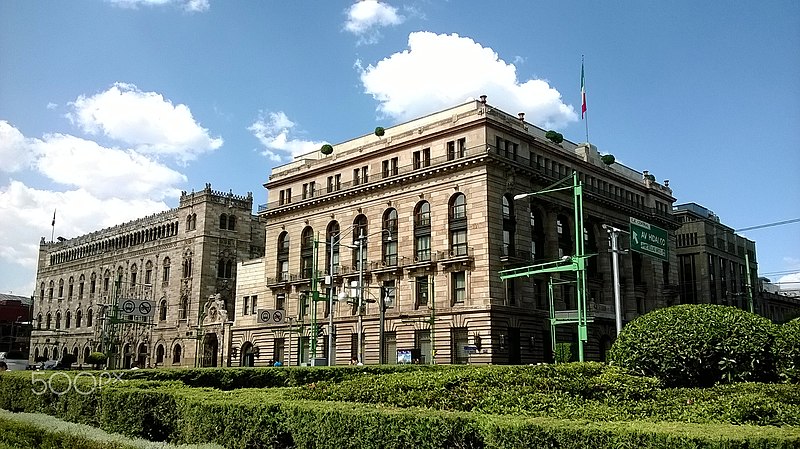
_
The Bank of Mexico Building houses the central bank, the primary function of which is to oversee the national currency. Built in 1905, it was intended to house the offices of The Mutual Life Insurance Company of New York. The building was designed by Theodore de Lemos working with the New York architect A.R. Whitney. It went up between 1903 and 1905. The building was officially opened by President Porfirio Díaz.
The building was sold 15 years later and planned for use as the country’s central bank. In 1925, the façade and interiors were completely remodeled by Carlos Obregón Santacilia and Francisco Ramos, with additions in the Arte Deco. Obregón added the two figures to the plaque bearing the bank name. The two sculptures, a man and a woman among fruits and vegetables, are by Puebla artist, Manuel Centurión. The building was reopened in 1925 during the administration, Plutarco Elías Calles. An adjacent lot, with the famous Casa de los perros was later purchased and Obregón then completed the annex building, the Edificio Guardiola in 1947.
Built on the same block as the acclaimed and far more elaborate Post Office Palace, the Bank of Mexico building is only a little more modest. Inspired by the Italian Renaissance, the style is eclectic combining a few different schemes. The side access doors have spaces for coats of arms with the initials of the Banco de México. The building is of four floors with iron lamps surrounding the entire ground level. The building is structured around hidden steel framework to safeguard it from sinking and from the City’s frequent seismic events. Obregón’s changes inside include a lavish hall in the Arte Deco style and a security vault.
It’s often merely passed by on visits to the Postal Palace. But the Bank of Mexico Building is an important historical landmark, and of course, one that’s still in daily use.
 +52 (55) 5237 2000
+52 (55) 5237 2000
 http://www.banxico.org.mx/
http://www.banxico.org.mx/
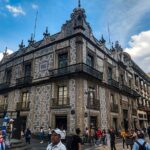
0.07 kms.
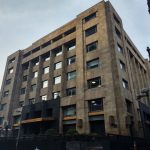
0.08 kms.
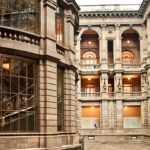
The National Art Museum in Mexico City's Centro Histórico is always going to be a holiday highlight.

Mercado La Paz is one of the oldest continually operating public market places in the city, great place for lunch!

Bellas Artes has long been an iconic symbol of Mexico City's culture, artistry, and the performance arts.
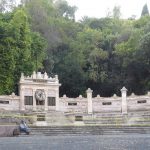
A quiet sun-dappled hemicycle in Chapultepec remembers the fallen in battles near and far.